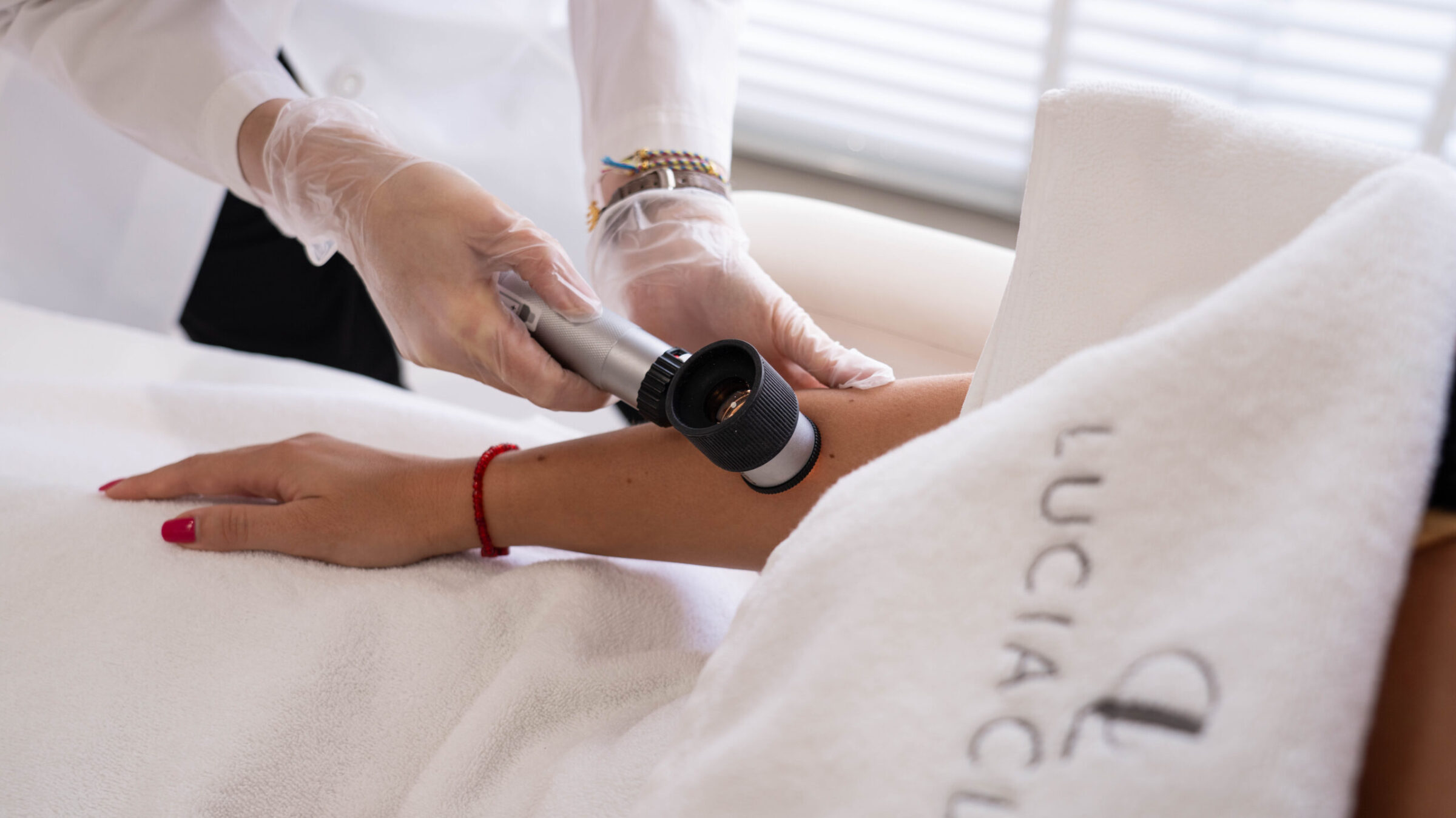WHAT ARE MOLES?
Moles are skin growths that form when skin cells, known as melanocytes, get collected on the surface of the skin. These skin cells produce melanin or the pigment that gives the skin its color. That is why most moles are brown. Moles usually develop between 5 and 30 years of age and can develop the most during puberty. On average, an adult can have around 30 moles all over the body. Later in life, moles tend to disappear especially when a person turns 70. Moles are harmless unless they change in shape, size or color.
Moles are medically known as melanocytic naevus and they can be of different types.
There are:
- Compound or raised mole
- Junctional or flat mole
- Intradermal or fleshy and raised mole
- Dysplastic or atypical mole
- Melanoma or cancerous mole
All moles are different in size, shape or color. Regular moles are evenly brown, symmetrical and defined. Some can have hair that grows through them. Within the years, moles, usually the ones on the face, can start losing their color or become fleshy.
Atypical or dysplastic moles are benign but can have some characteristics that resemble cancerous moles. They may have irregular size, shape or color. They are usually larger than 5 mm and can have 2 or more colors. Even though they are generally harmless, they carry a risk of turning into cancerous moles so it is important to check them regularly or remove them if the doctor requires so.
Almost all people have moles. Even babies are born with them and their moles often appear as warts. People with fair skin are more prone to developing moles than people with darker skin tones. Also, ladies who are pregnant can develop new moles and their existing moles can get a bit darker.
WHY SHOULD MOLES BE CHECKED?
Since the skin is the largest and one of the most visible organs it is easier to be proactive about preventing melanoma. Therefore it is important to check moles on a regular basis especially if people are fair-skinned, have a lot of moles on their bodies or their family members have a lot of atypical moles or previous history of melanoma.
The patient should always check the newly developed moles or the existing ones that
- Have changed their shape and look uneven
- Have changed their color, got darker or have 2 or more colors
- Have started crusting, itching, bleeding or flaking
- Have become bigger
- Have raised more from the skin
All these changes can happen really quickly, within a few weeks or months.
ABCDE RULE FOR EXAMINING MOLES
There are 5 characteristics of the moles that can indicate their changes:
Asymmetry – the mole isn’t even because one side is bigger or smaller.
Border – the edges or outline of the mole are blurred, irregular or jagged. They are not sharp or clear.
Colors – there are 2 or more colors on the mole, brown, black, white, blue or red. The color of the mole is not evenly toned.
Diameter – the mole is larger than 5 mm in its diameter.
Evolution – the mole has changed either in color or size in the last 6 or 12 months or has elevated from the skin. Or the new one has appeared.
In case of any of these changes, the patient should check the mole with the dermatologist.
WHAT ARE THE BENEFITS OF A REGULAR MOLE CHECK?
Skin cancers have become a common illness in today’s world so it is essential for people to check their skin and moles on a regular basis. That way any changes in the moles can be spotted immediately and any harmful consequences can be prevented. This is especially true for people who have a lot of moles or have someone in the family with a history of melanoma.
People should monitor all the new moles that develop when they are over 30. Most of these new skin growths are harmless and associated with aging, but if they look abnormal or atypical it’s best to have them checked by a skin specialist.
During a mole check appointment at Lucia Clinic, the patient is thoroughly consulted with a skin expert who checks the patient’s full body with a dermatoscopy. All the moles are carefully examined, especially the ones that have changed their shape, size or color recently. The doctor also explains to the patient how to monitor moles that are risky. The dermatologist can even suggest the patient have more frequent exams especially if the patient has a lot of moles. The patient can even have a suspicious mole removed for further analysis during the same appointment. Or he/she can have the mole removed because of aesthetic reasons.
With regular mole checks, the patient can keep his skin healthy and without the risk of developing any unwanted changes.





